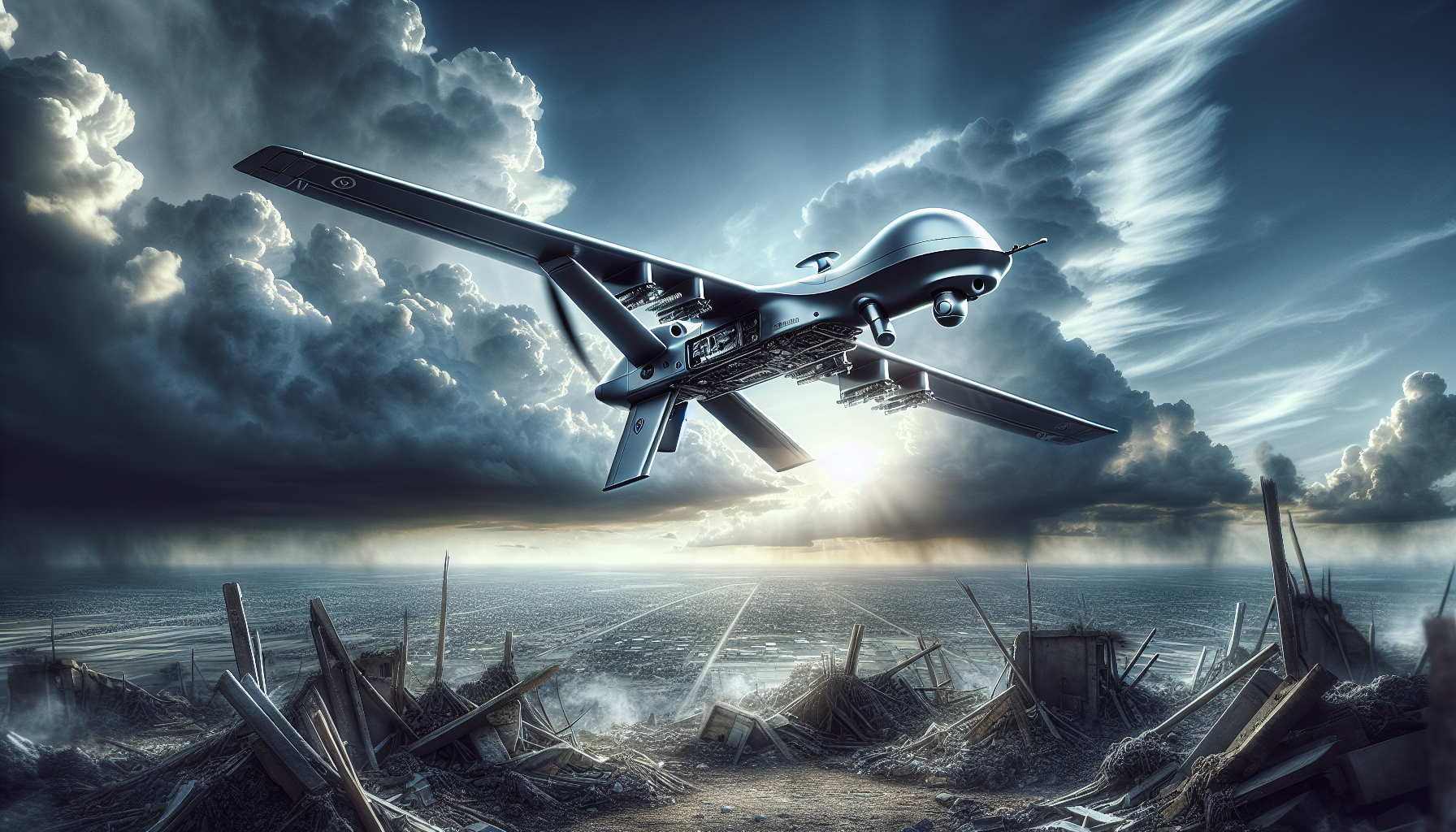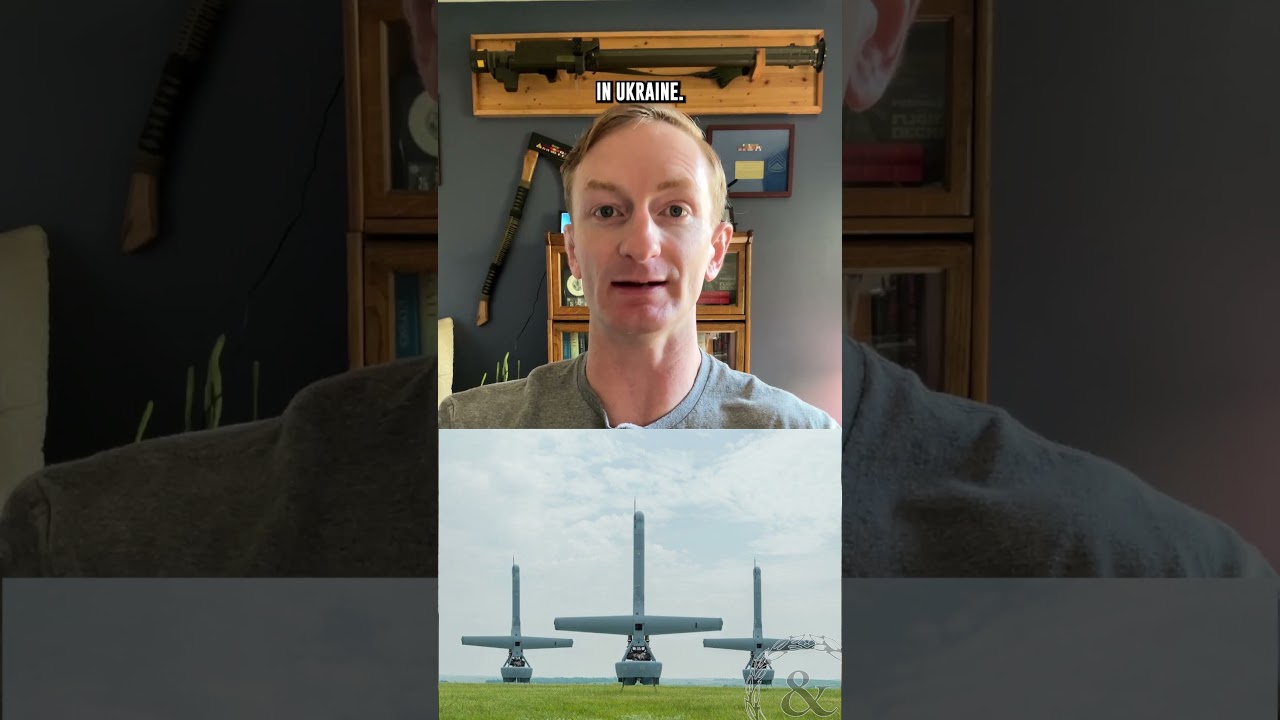The recent unveiling of the X-BAT drone by Shield AI marks a significant advancement in military technology, particularly within the United States Air Force’s CCA program. This drone’s capabilities, which include vertical takeoff and landing, autonomous operation, and the execution of various mission types, distinguish it from traditional aircraft in both size and function. Such innovations not only elevate operational efficiency but also suggest a transformative shift in the landscape of drone warfare.
This article will explore the multifaceted features of the X-BAT drone, analyzing its potential impact on modern military operations and strategic frameworks. Additionally, the discussion will contextualize its role within the broader defense industry, emphasizing the importance of technological evolution in maintaining tactical superiority. The advancements presented by the X-BAT drone invite consideration of the future of aerial combat and surveillance.
Overview of the X-BAT Drone
Introduction to the X-BAT
In the ever-evolving landscape of military aviation technology, the X-BAT drone represents a significant milestone in the operational capabilities of unmanned aerial vehicles (UAVs). Introduced by Shield AI, the X-BAT is engineered to fulfill a variety of complex missions typically reserved for manned aircraft, further pushing the boundaries of drone warfare. You are now invited to explore the multifaceted aspects of this innovative platform that could revolutionize modern military operations.
Key Specifications and Features
The X-BAT is characterized by its high level of versatility, integrating advanced technologies that make it suitable for various tasks. With a compact design allowing it to operate effectively in constrained environments, its specifications boast features such as vertical takeoff and landing (VTOL) technology, autonomous flight capabilities, advanced sensor arrays, and robust communications systems. These attributes not only enhance its operational readiness but also ensure it can perform efficiently in diverse scenarios, from reconnaissance missions to direct combat engagement.
Comparison with Traditional Drones
When comparing the X-BAT to traditional drones, you will note significant differences in scale, functionality, and operational complexity. Unlike conventional fixed-wing drones that require extensive runways and operational planning, the X-BAT streamlines deployment with its VTOL capabilities. This adaptability allows it to navigate and execute missions in urban environments or confined spaces, where larger aircraft would encounter significant challenges. Thus, the X-BAT sets itself apart not just through its innovations but through a transformative approach to drone utilization in military contexts.
Technological Innovations
Vertical Takeoff and Landing (VTOL) Capabilities
One of the defining features of the X-BAT is its VTOL capabilities, which you should regard as a game-changer for military operations. This technology allows the drone to take off and land vertically without the need for a dedicated runway, making it particularly suited for dynamic battlefield environments and urban settings. By eliminating the spatial constraints associated with traditional aircraft, VTOL technology enhances the X-BAT’s deployment flexibility and overall accessibility, allowing for rapid response to urgent military needs.
Autonomous Operations and AI Integration
The integration of artificial intelligence into the X-BAT’s operational framework facilitates advanced autonomous functionalities. You will find that this capability not only augments the drone’s efficiency in executing pre-set missions but also enhances its adaptability to unforeseen circumstances during flight. The AI engine enables real-time decision-making, allowing the drone to adjust its flight path, avoid obstacles, and respond to threats without human intervention. This level of autonomy represents a crucial advancement in drone technology, paving the way for an era where UAVs can operate independently in complex environments.
Advanced Sensors for ISR (Intelligence, Surveillance, Reconnaissance)
Equipped with advanced sensor suites, the X-BAT excels in ISR missions. These sophisticated sensors, capable of capturing high-resolution imagery and collecting critical intelligence data, allow the drone to perform comprehensive reconnaissance missions. You have to consider how such capabilities can enhance situational awareness on the battlefield, providing military operators with timely and accurate information. This fosters informed decision-making and strategic planning, which are essential components of modern warfare.

Capabilities of the X-BAT
Air-to-Ground Missions
In its role as an air-to-ground attack platform, the X-BAT is designed to effectively engage ground targets while minimizing risks to personnel. Its capability to deliver precision strikes can significantly alter ground combat dynamics, enabling operators to conduct surgical operations against high-value targets. This transition to drone warfare in direct combat scenarios underscores a fundamental shift in tactical engagement paradigms.
Air-to-Air Combat Potential
Though primarily designed for ground missions, the X-BAT also possesses air-to-air combat potential. With its advanced maneuverability and speed, you will see how it could be employed defensively or offensively in engaging hostile aerial threats. The ability to integrate advanced munitions and targeting systems allows the X-BAT to enhance air superiority efforts, which were once the confines of manned aircraft.
Electronic Warfare (EW) Applications
In addition to its combat capabilities, the X-BAT is engineered to conduct electronic warfare missions. You should recognize the profound implications of this functionality in disrupting enemy communications, jamming radar systems, and performing other cyber-electromagnetic operations. This multifaceted approach equips military strategists with a powerful tool for both offensive and defensive operations, broadening the scope of missions that the drone can undertake.
Impact on the Air Force’s CCA Program
What is the CCA Program?
The Collaborative Combat Aircraft (CCA) program is a critical initiative within the U.S. Air Force aimed at integrating advanced unmanned systems into joint operations. The introduction of the X-BAT into this framework could represent a pivotal moment for the program, which seeks to redefine manned-unmanned teaming paradigms in modern warfare.
Potential Changes to Air Force Tactics
With the X-BAT’s advanced features and capabilities, you will see a shift in Air Force tactics. The strategic integration of such drones could facilitate a more nuanced approach to air combat, allowing for enhanced collaboration between manned and unmanned systems. The ability of the X-BAT to operate autonomously, coupled with its advanced weaponry and ISR capabilities, suggests a future in which traditional tactics may be adapted or entirely redefined to capitalize on the strengths of drone technology.
Integration with Existing Systems
Another critical consideration is how the X-BAT can seamlessly integrate with existing military systems. As the Air Force continues to update its fleet and operational framework, the X-BAT is poised to complement legacy systems, bridging the gap between older and newer technologies. This interoperability could foster enhanced operational efficiency, ultimately leading to improved mission outcomes.

Size and Portability Benefits
Smaller Footprint Compared to Traditional Aircraft
When evaluating the X-BAT, you will note its significantly smaller footprint in comparison to traditional aircraft. This reduction in size not only facilitates easier transport and deployment but allows for operations from a wider range of environments. You will appreciate how this portability enhances the versatility of the drone, enabling it to be launched from various platforms, including naval vessels and ground installations.
Deployment Versatility
The X-BAT’s design promotes exceptional deployment versatility. Its ability to operate in austere environments and launch from confined spaces significantly enhances its potential on the battlefield. You can envision how this capability allows military units to respond more rapidly to emerging threats, providing commanders with the flexibility needed in modern warfare.
Adaptation for Different Military Branches
You ought to consider how the X-BAT could meet the needs of different military branches beyond the Air Force. Its diverse operational capabilities make it suitable for the Army and Navy as well, suggesting a potential for cross-service integration that would maximize investment and enhance overall military effectiveness. As warfare becomes more joint in nature, the adaptability of systems like the X-BAT increases in importance.
Advancements in Drone Warfare
Evolution of Drone Technology
The evolution of drone technology has been marked by rapid advancements in autonomy, payload capacity, and operational versatility. With the introduction of platforms like the X-BAT, you witness a maturation of UAV capabilities that reflect a growing sophistication in their design and intended application. This continuous progression signifies a shift toward more complex warfare dynamics and highlights the importance of integrating emerging technologies into military capabilities.
The Shift Toward Autonomous Warfare
Societal and technological trends point to a shift towards autonomous warfare. The X-BAT embodies this trend through its reliance on AI and autonomous operation, which may lead to reduced reliance on human oversight in combat scenarios. You must consider the implications of this shift, including improved operational efficiency and the potential for less human casualties in traditional conflict engagements.
Ethical Considerations in Drone Warfare
As you explore the advancements in drone warfare, ethical considerations arise regarding the use of drones in military operations. The X-BAT introduces significant questions regarding accountability, decision-making in life-and-death scenarios, and the implications of reliance on autonomous systems. Ethical frameworks must evolve alongside technological advancements to address the complexities inherent in drone warfare.

Competitor Analysis
Overview of Existing Drone Models
Considering the proliferation of UAV technology within the military sector, you will find a variety of existing drone models competing for various roles. From established platforms like the MQ-9 Reaper to emerging technologies, each system has its strengths and weaknesses. You will be tasked with assessing how the X-BAT positions itself against these established models.
Comparative Performance Analysis
When analyzing performance among competing models, the X-BAT differentiates itself through its combination of VTOL capabilities, advanced sensor technologies, and increased operational versatility. You ought to evaluate performance metrics such as range, payload capacity, and combat effectiveness carefully. These factors are crucial in your understanding of how the X-BAT might redefine expectations and capabilities within the UAV landscape.
Potential Market Impact
The introduction of the X-BAT is likely to impact the UAV market significantly. As military organizations worldwide seek to modernize their fleets, the innovative capabilities of the X-BAT may set new benchmarks for performance and functionality. You can visualize how this advancement will not only impact military procurement strategies but also drive competition and innovation in the broader drone market.
Future Directions for Shield AI
Upcoming Innovations and Features
Looking ahead, Shield AI is poised to continue developing and enhancing the X-BAT. You can anticipate future innovations that will further improve its stealth, range, and data processing capabilities. These enhancements will only serve to solidify the X-BAT’s status as a premium tool in the military’s technological arsenal.
Strategic Partnerships and Collaborations
As the landscape of military technology evolves, Shield AI’s potential for strategic partnerships will play a crucial role in its growth and influence. Collaborations with defense contractors and technology firms could lead to groundbreaking innovations that enhance the X-BAT’s capabilities and operational scope. You should keep an eye on these developments as they unfold.
Long-term Vision for Drone Warfare
The long-term vision for Shield AI centers on expanding the use and capabilities of drones in warfare. With the X-BAT acting as a cornerstone, you will observe a paradigm shift towards more integrated and versatile drone strategies. This vision encapsulates a future in which military operations are increasingly conducted by unmanned systems, appealing to both efficiency and efficacy on the battlefield.
Community and Public Perception
Public Interest and Support
The unveiling of the X-BAT has generated significant public interest and support within both military and civilian spheres. You will find that enhancing public awareness of drone technology often correlates with greater acceptance and support for military advancements. This phenomenon underscores the importance of transparent discourse regarding the implications of such technologies in society.
Concerns and Criticism
While excitement surrounds the X-BAT, concerns and criticism are equally present. You should consider issues such as privacy, ethical use in combat, and the militarization of drone technology. These criticisms warrant thoughtful dialogue as the implications of advanced aerospace technologies are debated in public forums.
Engagement in Military Discussions
The ongoing discussions surrounding the X-BAT and drone warfare tap into broader military conversations. Engaging with diverse perspectives, from military strategists to civilians, plays a crucial role in shaping the policy landscape surrounding the deployment of such technologies. You will benefit from participating in these dialogues as new ideas and considerations emerge.
Conclusion
Summary of Key Points
In summary, the X-BAT drone represents a transformative force in the realm of military aviation. With its advanced capabilities, including VTOL technology, autonomous operations, and diversified mission profiles, it is well-positioned to impact the Air Force’s CCA program profoundly. The X-BAT’s technological innovations serve as a bellwether for the future trajectory of drone warfare.
Implications for the Future of Drone Warfare
As you contemplate the X-BAT’s implications, it becomes increasingly clear that this platform significantly influences the evolution of drone technology, operational tactics, and ethical considerations in warfare. The suite of advanced capabilities it offers signals a shift toward a future where drones play a critical role in military strategies.
Final Thoughts on the X-BAT’s Role
In closing, the X-BAT embodies not only a technological advancement but also a reflection of evolving military needs and societal shifts. Your understanding of the implications of this drone—both positive and negative—will be crucial as you navigate the complexities of an increasingly automated battlefield. As the military landscape continues to evolve, the role of the X-BAT will likely expand, shaping the future of warfare in ways we can only begin to imagine.
